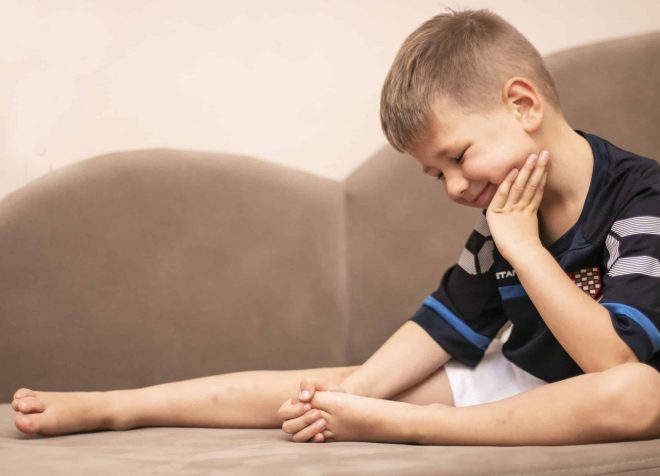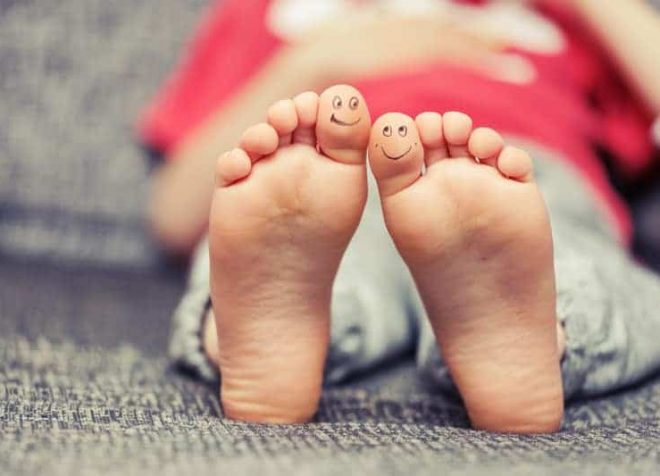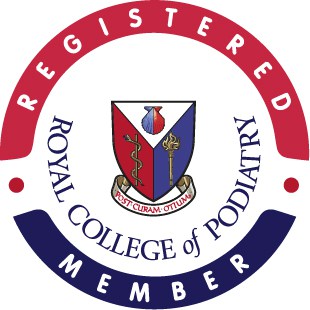Children’s Foot & Leg Problems
Foot pain in children is not uncommon and can result from musculoskeletal disorders, injury or developing foot-related conditions such as ingrown toenails or verrucae. The fact is that children can suffer from the same foot conditions as adults do.
In the case of ingrown toenails or verrucae, the symptoms are visible, and therefore it’s easier to understand the cause of the pain. For example, parents can see if a nail has started to puncture the skin of the toe or a verruca is developing on the sole of the foot. However, musculoskeletal disorders or structural abnormalities can be a lot more challenging to diagnose.

Children often complain of feeling discomfort or pain in their legs or getting tired when walking or playing. Unfortunately, many parents associate these symptoms with temporary ‘growing pains’ without realising it could be a foot-related problem.
It is also important to remember that many children don’t show any symptoms but still suffer from a structural abnormality of the foot, that with time it can lead to pain.
At Walk This Way Podiatry, we believe that prevention is key to ensure your children feet develop pain-free and any abnormalities are spotted early to minimise the risk of deterioration.
Prevention starts with an in-depth analysis of your child’s feet and a thorough medical assessment to evaluate the foot health and identify any underlying problems that may affect your child’s mobility in the future.
If you are concerned about your child’s foot development, walking patterns, posture, or any signs of pain, we suggest you book a Biomechanics Assessment to examine the causes and get to the root of the problem.
Equally, we can help you treat ingrown toenails and verruca quickly, safely and pain-free.

Foot pain in children
Misalignment of foot and ankle, leg posture or biomechanical dysfunction of the lower limbs are conditions that can cause your child to experience ongoing and persistent pains. Children may also suffer from general musculoskeletal pain, flat feet, knock knees, and common injuries from sports, trips and falls, all of which can easily be solved with the right treatment.
The most effective method to diagnose the cause of foot pain in your child is a biomechanical assessment. This thorough process consists of a physical examination to assess how the pelvis, legs, knees, and feet’s mechanisms work as a whole and determine any abnormalities that may be affecting the others, leading to pain.
Through a biomechanical assessment, we can gather a comprehensive understanding of your child’s specific foot structure. We can advise you whether your child’s lower limb development falls within acceptable limits for their age, what other factors can be the cause of the condition and if treatment is required.
In many cases, reassurance, postural exercise and a change of footwear are all that is needed.

Ingrowing toenails in children
Ingrown toenails is a common and painful foot problem in children that can lead to severe infection if left untreated.
An ingrown toenail is caused when the nail — generally of the big toe — grows down into the toe’s skin instead of straight out and above the skin. As a result, children can have tenderness, redness, and swelling of the skin around the nail’s corner on one of the big toes.
Causes of ingrown toenails in children can vary. The most common ones are wearing tight shoes, picking, peeling, biting or incorrectly cutting toenails, leading to a nail spike.
If your child is suffering from chronic ingrown toenails, the most effective way to treat it is with a minor surgical procedure to remove the edge of the nail that has grown into the skin. It is quick, safe and overall painless. You can read more about what’s involved in a nail surgery procedure here.

Verruca in children
It is not uncommon for children to develop verruca. In fact, nearly one in three children have them.
Verrucae are warts on the soles of the feet. They are caused by three different strains of the human papillomavirus (HPV). Although they are harmless to your child and will cause them no health issues, they can be painful when appearing on a pressure-bearing area of the foot.
A verruca appears in the shape of a small, rough, raised or flattened lump on the sole of the foot. The virus is highly contagious and enters the skin through tiny breaks on the skin surface. It can spread by stepping on a contaminated surface or through close skin contact. For example, children can easily catch it when walking barefoot around the edges of a swimming pool or floors of public locker rooms and shower cubicles, as the verruca virus thrives in moist, damp environments.
Verrucae can take up to six months to mature and incubate and for symptoms to then occur.
In children, most verrucae will clear within two years and they can be managed at home if not causing problems. The best option in this instance is to leave the verruca alone and allow the immune system to recognise the virus and naturally build up immunity to it as the child grows and develops.
On the other hand, if children are experiencing physical pain which prevents them from walking or practising sport or suffering emotional distress because they’re embarrassed by their feet, it’s important you seek medical advice. The same rule applies if your child’s verruca spreads, bleeds, or changes in appearance.
At Walk This Way Podiatry, we specialise in SWIFT® Microwave Verruca treatment which is suitable for children from the age of 6. SWIFT Microwave Verruca treatment uses electromagnetic waves to penetrate deep into the affected tissue to weaken and destroy the verruca virus. This mechanism also alerts the immune system and help it recognise the virus, activating its self-healing response.
The treatment is quick, safe, contains no chemicals and requires no anaesthetic or aftercare. Clinical studies demonstrate that it is 85% effective within 1-4 treatments







